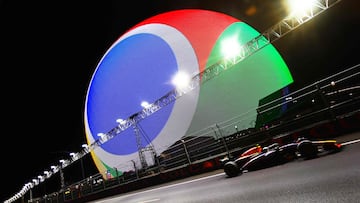What was the economic impact of last year’s Formula 1 race in Las Vegas?
Clark County gave a brief overview of the total dollars, jobs, and household income generated for the Las Vegas Grand Prix, and the results are impressive.


Formula One owner Liberty Media held one of the season’s most exciting races, a luxurious international event that could only be hosted in Las Vegas. However, the preparations and construction for the race caused traffic problems that frustrated the locals. Additionally, the initially high prices and temporary grandstands and signage that obstructed views of iconic landmarks such as the Bellagio fountains and the Mirage volcano received criticism from residents and visitors alike. Despite the negative feedback, the race was a huge success, attracting a capacity crowd of 315,000 fans to the Las Vegas Strip.
In the meantime, Las Vegas and Clark County authorities have released a comprehensive report that thoroughly analyzes the economic impact of the Formula 1 race held last year. According to the report, the event had a significant economic impact, amounting to $1.5 billion, which included visitor spending of $884 million. The report also highlights that the race generated $77 million in tax revenue, which was more than any other event in the history of Las Vegas.
Las Vegas has released a 40-page report breaking down the economic impact of last year's Formula 1 race.
— Joe Pompliano (@JoePompliano) April 1, 2024
Here are the highlights:
• The total economic impact has been measured at $1.5 billion, including visitor spending of $884 million.
• The race generated $77 million in… pic.twitter.com/oLe67Sbk6V
Furthermore, the Formula One organizers spent $88 million on public infrastructure improvements, which didn’t include land acquisition costs. The report also reveals that visitors spent 3.6 times more during the race than the typical Las Vegas traveler, with an average stay of 4.1 nights and an average spending of $4,100.
The event also had a positive impact on the local economy. The report indicates that local workers earned $52 million in wages, and the race created 7,300 jobs. Of these, 2,200 were related to race-related construction projects, whereas 5,100 were created for event operations.
Related stories
Moreover, the race particularly impacted Las Vegas Airport’s operations. It was the second-busiest airport in the country the day after the race, with 2,200 operations.
In conclusion, Clark County confirms that the Formula 1 race was the largest sporting event with the largest global audience in Las Vegas history. The comprehensive report has made it clear that the event had a considerable economic impact on the local economy. It can be concluded that F1, along with its owners Liberty Media, who in the meantime bought the MotoGP commercial rights, will be back for the foreseeable future, bringing economic benefits to Las Vegas once again.

